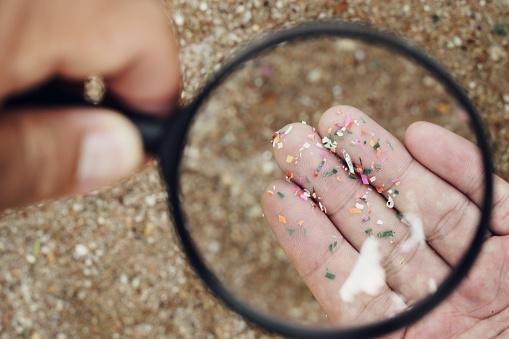Microplastics, which are polluting for the environment and toxic to humans, are one of the biggest environmental problems of today. For this reason, A group of scientists from Shinshu University in Japan is developing a technique that makes acoustic filtering possible. remove microplastics from water.
In a study published in the scientific journal Separation and Purification Technology, researchers describe a microfluidic device in which three 1.5mm wide microchannels are connected to four 0.7mm wide trifurcated ports. Using acoustic technology, ultrasonic waves ‘push’ microplastics in the water into ports where waste is collected or filtered.
“The microplastics are aligned in the center of the middle microchannel using a bulk acoustic wave at a resonant frequency of 500 kHz. It can be installed in washing machines, factories and other sources of microplastics to efficiently enrich and remove microplastics of various sizes from laundry and industrial waste. This prevents contamination of these microparticles in the environment. will make it possible,” he said.
Microfluidic technology is being studied more and more by scientists around the world, making it possible to manipulate the behavior of water at the micro level. Akyiama even claims that the device can be used for efficient, fast and continuous collection of microplastics up to 200 micrometers.
Microplastic ultrasonic filter
In tests with microplastics of 5, 10, 15, 25, 50 and 200 micrometers in diameter, the scientists were able to collect up to 90% of all waste – microplastics of only 5 micrometers did not reach this percentage because they were too small. must be acoustically controlled.
The most common microplastic collection techniques involve mesh filters, but in addition to the mesh size limitation, the filters can easily become clogged.
In another study, scientists developed a device that can filter wastewater from laundries, but the new model could be used on a larger scale, such as filtering wastewater from different industries. While some microplastics continue to clog and slow down the device, the team believes that fine-tuning the pre-filtration process could improve the issues.
Source: Tec Mundo
I’m Blaine Morgan, an experienced journalist and writer with over 8 years of experience in the tech industry. My expertise lies in writing about technology news and trends, covering everything from cutting-edge gadgets to emerging software developments. I’ve written for several leading publications including Gadget Onus where I am an author.













